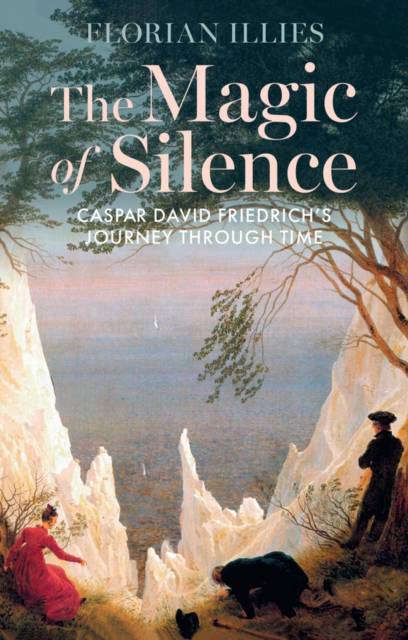
- Afhalen na 1 uur in een winkel met voorraad
- Gratis thuislevering in België vanaf € 30
- Ruim aanbod met 7 miljoen producten
- Afhalen na 1 uur in een winkel met voorraad
- Gratis thuislevering in België vanaf € 30
- Ruim aanbod met 7 miljoen producten
Zoeken
The Magic of Silence
Caspar David Friedrich's Journey Through Time
Florian Illies
Hardcover | Engels
€ 27,95
+ 55 punten
Omschrijving
No German painter evokes such strong emotions as Caspar David Friedrich: his evening skies remain icons of longing, his mountain vistas testaments to the grandeur of nature. He inspired Samuel Beckett to write Waiting for Godot and Walt Disney to create Bambi. Goethe, however, was so enraged by the enigmatic melancholy of Friedrich's paintings that he wanted to smash them on the edge of a table.
In a sweeping journey through time, bestselling author Florian Illies tells the story of Friedrich's paintings and their impact on subsequent generations. Many of his most beautiful paintings were burned, first in his birthplace and then in World War II; others, like the Chalk Cliffs on Rügen, emerge from the mists of history a hundred years after Friedrich's death. Illies recounts the story of how Friedrich's paintings ended up at the Russian czar's court, others among a pile of winter tires in a Mafia car repair shop, and others still in the kitchen of a German social housing apartment. Adored by Hitler and Rainer Maria Rilke, despised by Stalin and by the generation of 68, this compelling narrative dances through 250 years of history as seen through Friedrich's art and life. As a result, the man himself becomes flesh and blood before our very eyes.
In a sweeping journey through time, bestselling author Florian Illies tells the story of Friedrich's paintings and their impact on subsequent generations. Many of his most beautiful paintings were burned, first in his birthplace and then in World War II; others, like the Chalk Cliffs on Rügen, emerge from the mists of history a hundred years after Friedrich's death. Illies recounts the story of how Friedrich's paintings ended up at the Russian czar's court, others among a pile of winter tires in a Mafia car repair shop, and others still in the kitchen of a German social housing apartment. Adored by Hitler and Rainer Maria Rilke, despised by Stalin and by the generation of 68, this compelling narrative dances through 250 years of history as seen through Friedrich's art and life. As a result, the man himself becomes flesh and blood before our very eyes.
Specificaties
Betrokkenen
- Auteur(s):
- Vertaler(s):
- Uitgeverij:
Inhoud
- Aantal bladzijden:
- 192
- Taal:
- Engels
Eigenschappen
- Productcode (EAN):
- 9781509567546
- Verschijningsdatum:
- 21/01/2025
- Uitvoering:
- Hardcover
- Formaat:
- Genaaid
- Afmetingen:
- 149 mm x 219 mm
- Gewicht:
- 362 g

Alleen bij Standaard Boekhandel
+ 55 punten op je klantenkaart van Standaard Boekhandel
Beoordelingen
We publiceren alleen reviews die voldoen aan de voorwaarden voor reviews. Bekijk onze voorwaarden voor reviews.








